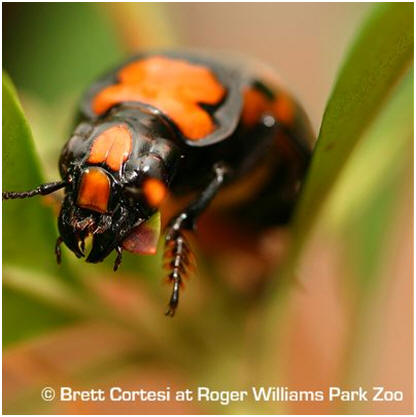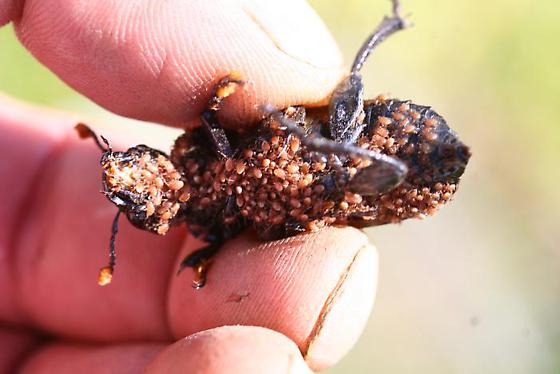Adaptation and Interaction
The most prevalent adaptation of Nicrophorus americanus is the iconic orange and black coloration on the dorsal portion of the body; this also makes Nicrophorus americanus one of the most recognizable beetles in North America (Ratcliffe et al, 1992). Another viewable adaptation of the Nicrophorus americanus is the upper frontal head plate that covers behind the head.
A common interaction of the Nicrophorus americanus is a symbiotic relationship with orange colored mites. These swarms of mites keep the carcass, and the beetle feeds on microbes and fly eggs. Otherwise, the fly eggs hatch and the animal carcass becomes infested with maggots, which Nicrophorus americanus does not like. These mites can be found most often on either the dead animal in which the Nicrophorus americanus is feeding, or on the Nicrophorus americanus itself!
Copyright © 2011 Eric LoPresti
Another amazing ability of
Nicrophorus americanus
is that they can go tremendous distances while also at fast speeds looking
for dead mammals, comparative to
Nicrophorus
americanus’s size. They move for these long
distances in order to find the perfect carcass to which they either
mate or feed on
(Creighton et al, 1998). The species
Nicrophorus americanus
is a nocturnal animal, which means they are awake at night and sleep
most during the day (Bedick 1999).
In order to survive in harsh weather, some species of
Nicrophorus sleep for an extended
period of time after stocking up on fat. This adaptation is called hibernation, and is much like a
bear does during the winter.
To learn more about what Nicrophorus americanus eats, click Nutrition
Back to HOME


